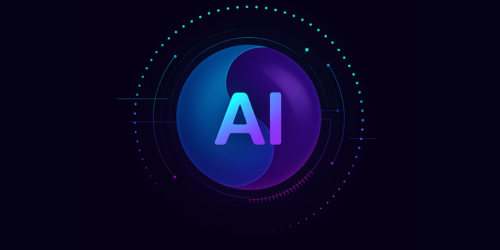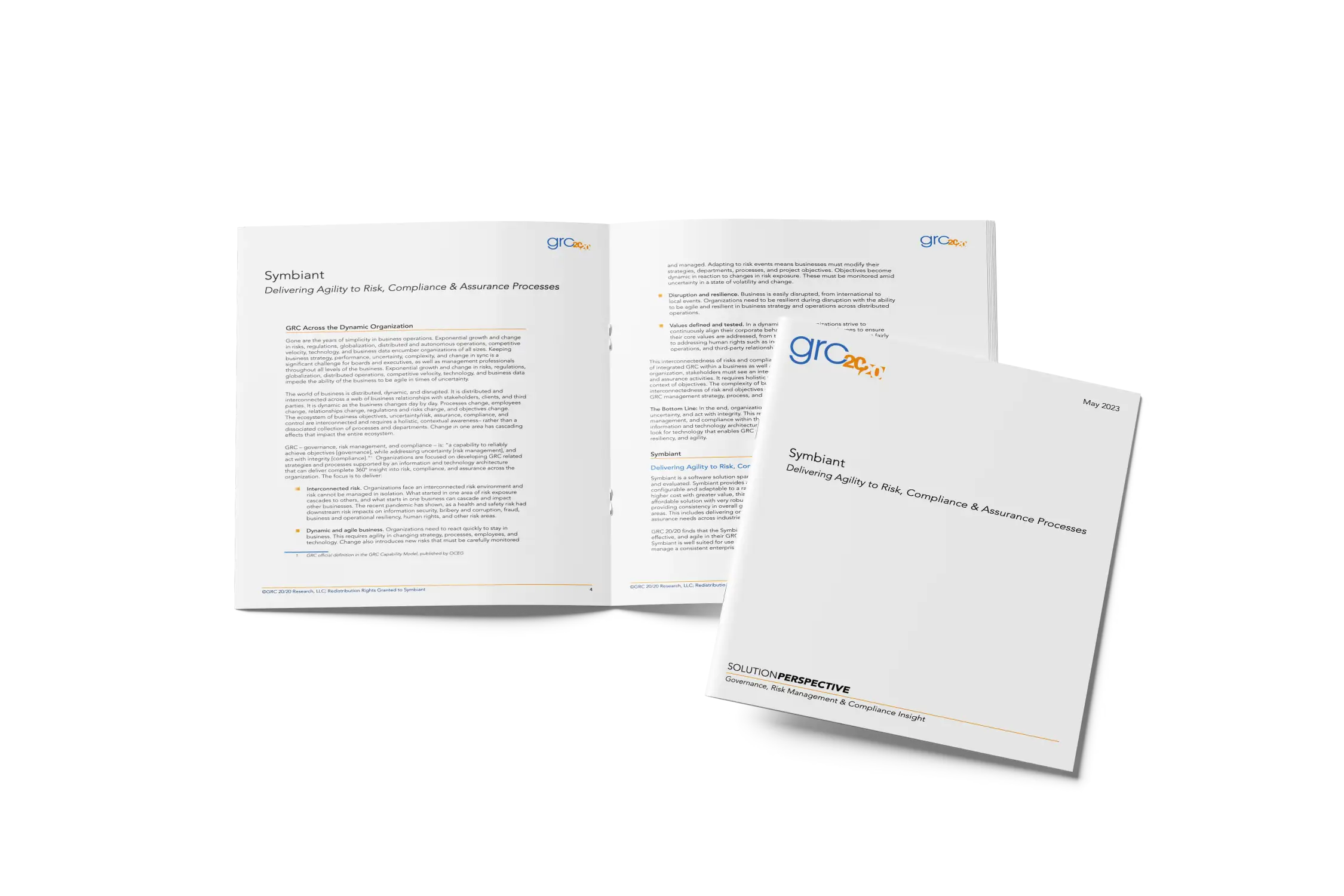Symbiant Business Continuity Planning (BCP)
Strengthen Business Resilience with ISO 22301-Aligned Business Continuity Planning Software
Disruptions are inevitable. The question is: how quickly can your organisation recover? This guide explains what Business Continuity Planning is, why it matters, and how to implement effective BCP strategies with the right tools.
From only £100 per module/month for unlimited users*
Award-Winning GRC & Audit Software, Trusted Since 1999 by Companies of All Sizes


































Business Continuity Planning (BCP) Software
What is Business Continuity Management?
Business Continuity Management (BCM) software is a digital platform that helps organisations design, implement, and maintain a business continuity plan (BCP). At its core, business continuity is about resilience, the ability to keep critical operations running during emergencies such as cyberattacks, floods, fires, supply chain failures, pandemics, or workforce shortages.
Unlike manual systems or spreadsheets, modern continuity software provides a centralised and automated approach to risk assessment, recovery planning, and incident management. With the right solution, organisations can reduce downtime, safeguard profitability, and maintain compliance with international standards like ISO 22301 and regulatory bodies such as the ICO.
Symbiant’s Business Continuity Planning (BCP) Module goes further by integrating with Risk Registers, Controls & Policies , and action tracking, giving organisations a complete, interconnected framework for operational resilience.
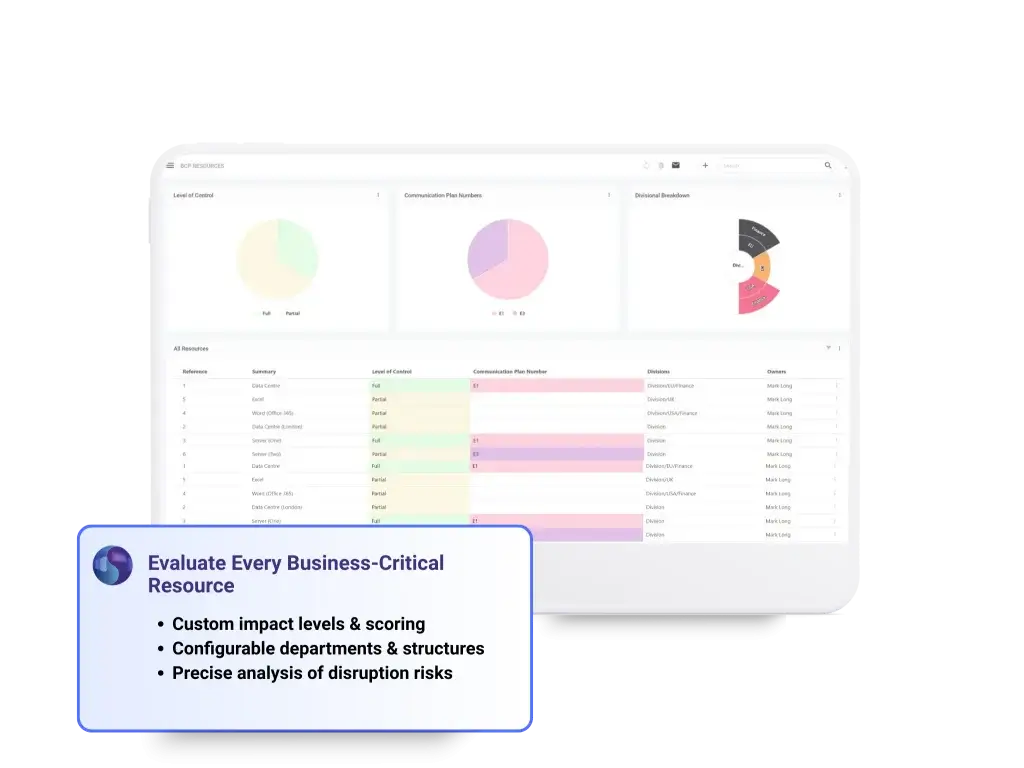
Business Continuity Planning (BCP) Software
Business Continuity Management Software: Ensuring Resilience, Recovery, and Contingency
Business continuity management software enables organisations to develop and implement strategies for maintaining operations during disruptions. A robust business continuity plan typically includes risk assessment, recovery planning, and incident management, ensuring that the business is prepared for threats and can minimise downtime.
At the heart of any business continuity solution are three key considerations:
Resiliency – strengthening systems and processes to withstand disruption.
This means building redundancy into IT and supply chains, diversifying resources, using backups and failover systems, training staff for crisis response, and fostering a culture of preparedness. By anticipating vulnerabilities and embedding resilience, organisations can keep critical operations running even during unexpected events.
Recovery – establishing clear steps to restore critical operations quickly.
This involves setting recovery time objectives, prioritising essential functions, activating disaster recovery plans, and ensuring backups or alternate systems are in place. With defined processes and regular testing, organisations can minimise downtime and return to normal operations faster.
Contingency – preparing alternatives to maintain essential services when standard operations are interrupted.
This includes identifying backup suppliers, secondary sites, and manual workarounds so that critical services can continue even if primary systems fail. Contingency ensures the business can adapt and function until full recovery is achieved.
Minimising Disruption
The primary objective of BCM is to reduce the impact of operational disruptions. This requires identifying vulnerabilities, conducting business impact analyses, and implementing proactive measures such as redundancy, monitoring, and automated response processes. By doing so, organisations can keep essential operations functioning and reduce costly downtime during emergencies.
Safeguarding Stakeholders
Business continuity is also about protecting people. Employees, customers, investors, and partners must be reassured that the organisation is prepared to handle disruption. Clear roles, responsibilities, and communication protocols ensure stakeholders remain informed and supported. Safeguarding stakeholder trust not only preserves relationships but also reduces financial and reputational risks.
Ensuring Resilience
Resilience means strengthening systems, processes, and culture so the organisation can adapt and recover quickly. This includes diversifying supply chains, implementing data backups, testing recovery plans, and fostering a culture of preparedness. A resilient organisation is one that can withstand shocks and return to normal operations with minimal disruption.
Regulatory Compliance
Many industries, particularly finance, healthcare, and government, face strict regulatory requirements for continuity planning. Compliance with standards like ISO 22301 demonstrates a commitment to operational resilience and risk management. By embedding continuity planning into core business processes, organisations can meet legal obligations, avoid penalties, and satisfy auditors and regulators.
Protecting Reputation
Reputation is one of the most valuable assets a business can hold. BCM ensures that even when disruption occurs, the organisation can demonstrate preparedness, reliability, and accountability. Transparent reporting, tested continuity strategies, and swift recovery protect the organisation’s credibility and provide a competitive edge in the market.
Continuous Improvement
Business continuity is not a one-time exercise but an ongoing process of review, testing, and refinement. Regularly updating continuity plans through exercises, audits, and post-incident reviews ensures they remain effective against evolving risks such as cyber threats, climate-related events, and supply chain disruptions. Continuous improvement strengthens resilience, supports compliance with ISO 22301, and ensures the organisation’s continuity framework adapts to new challenges.
Business Continuity Management
Objectives of Business Continuity Management
Business Continuity Management (BCM) is more than just compliance, it’s about ensuring that organisations remain resilient, agile, and capable of maintaining critical services during disruption. Symbiant’s Business Continuity Planning (BCP) Software aligns with the key objectives of BCM, helping organisations not only prepare for emergencies but also demonstrate compliance with ISO 22301 and ICO requirements, safeguard stakeholders, and protect their reputation.
Business Continuity Planning (BCP) Software
Difference Between BCP and BCM
Although often used interchangeably, Business Continuity Planning (BCP) and Business Continuity Management (BCM) are distinct but closely related concepts.
Business Continuity Planning (BCP) refers to the specific plan an organisation develops to ensure critical functions can continue after an unexpected disruption. A BCP outlines the exact actions, recovery steps, and resources needed to restore operations once the crisis has passed. It is typically document-based and focuses on practical execution during and after an event.
Business Continuity Management (BCM), by contrast, is the overall management framework that oversees and governs continuity strategies. BCM is an ongoing process of risk assessment, prevention, preparedness, response, and recovery. It ensures that continuity planning is embedded into organisational culture, regularly tested, and aligned with standards such as ISO 22301.
In simple terms, BCP is the tactical plan, while BCM is the strategic process. Together, they provide a holistic approach to resilience, ensuring organisations are prepared for disruptions such as fires, floods, cyberattacks, supply chain failures, workforce strikes, or pandemics.
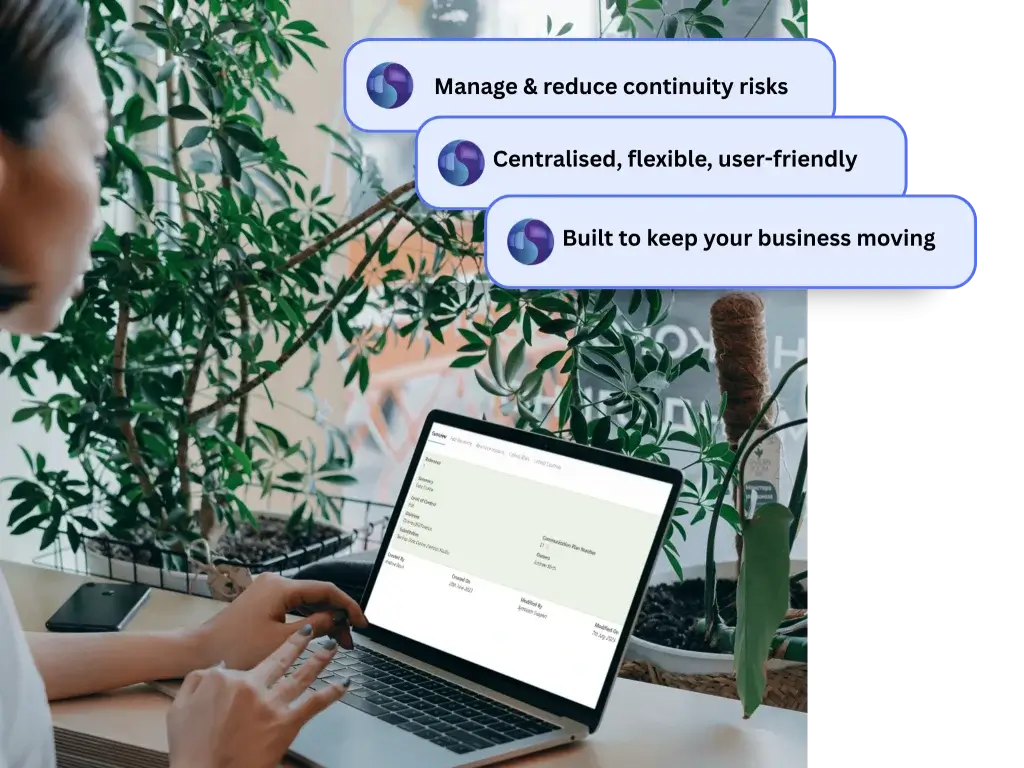
Business Continuity Planning (BCP) Software
How Symbiant Supports Implementation of ISO 22301
Implementing ISO 22301 Business Continuity Management Systems (BCMS) is far easier with Symbiant. Our Business Continuity Planning (BCP) Module allows organisations to build, document, and test their continuity framework in line with ISO 22301 requirements, while the integrated Incident Reporter provides an accessible platform to log events that could impact critical assets. Every update is fully traceable, creating a defensible audit trail that shows who made changes and when. By replacing manual spreadsheets with an automated, centralised solution, Symbiant makes compliance straightforward, cost-effective, and reliable — all for just £100 per module, per month*.
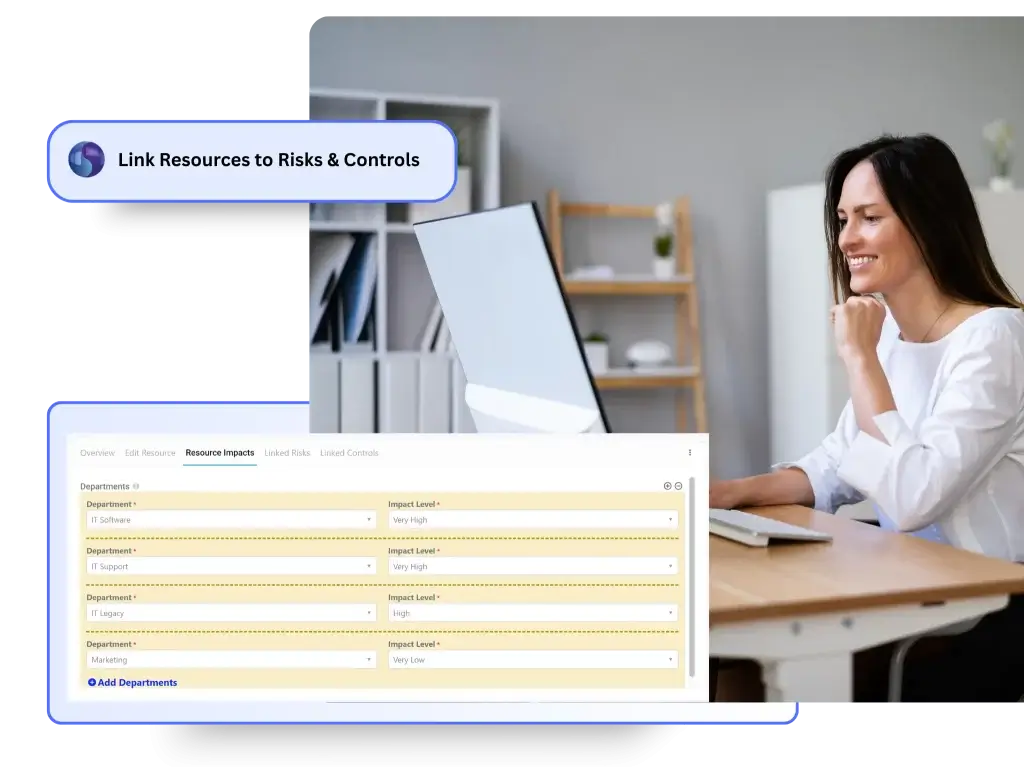
Business Continuity Planning (BCP) Software
Key Elements of Business Continuity Management (BCM)
Business Continuity Management (BCM) is a holistic process designed to ensure organisations can prepare for, respond to, and recover from unexpected disruptions. A strong continuity framework integrates multiple elements, each working together to maintain resilience, safeguard compliance with ISO 22301, and protect critical business functions. Below are the key elements of an effective business continuity management strategy.
Business Continuity Plan (BCP)
The business continuity plan is the foundation of BCM. It sets out the detailed steps an organisation must follow to resume operations during and after an unplanned disruption. Unlike a disaster recovery plan, which focuses primarily on IT systems, a BCP covers the full scope of business functions, including contingency measures for processes, people, and resources. A well-documented BCP defines clear roles, responsibilities, and recovery priorities, ensuring leadership and stakeholders can act quickly and effectively when disruption occurs.
Emergency Response
Emergency response is the immediate, short-term action taken when an incident occurs. Whether it’s a natural disaster, fire, pandemic, or security breach, emergency response focuses on safeguarding lives, protecting assets, and limiting damage. This stage requires rapid mobilisation of people, resources, and communication channels. By planning and rehearsing emergency response procedures in advance, organisations can react decisively, minimise harm, and maintain safety while preparing for recovery.
Crisis Management
Crisis management is the structured process of handling major events that threaten business operations, stability, or reputation. Unlike emergency response, which addresses immediate threats, crisis management focuses on stabilising the organisation, coordinating recovery, and restoring normal operations as quickly as possible. Crises may be triggered by political, economic, environmental, or security-related factors, and they require clear decision-making and transparent communication to reduce uncertainty and protect organisational objectives.
Disaster Recovery (DR)
Disaster recovery is a critical element of continuity that addresses the restoration of IT infrastructure, systems, and data after a disruption. Cyberattacks, power outages, or server failures can bring operations to a halt, making recovery plans essential. Disaster recovery strategies typically include backups, alternate systems, and recovery time objectives (RTOs) to minimise downtime. Regular testing and post-incident reviews ensure that DR measures remain effective, evolving with new threats such as ransomware and data breaches.
Business Impact Analysis (BIA)
A business impact analysis identifies the critical business functions that must be prioritised in a disruption. By evaluating the potential financial, operational, and reputational impact of downtime, organisations can set recovery priorities and determine acceptable recovery timeframes. BIA is a cornerstone of BCM and directly supports compliance with ISO 22301, as it provides the data needed to align continuity strategies with real-world risks and organisational risk appetite.
Risk Management
Risk management within BCM focuses on identifying, assessing, and prioritising potential threats to the organisation. These may include operational risks, regulatory compliance risks, financial risks, cyber threats, and supply chain vulnerabilities. By evaluating the likelihood and potential impact of each risk, organisations can implement controls, monitoring systems, and preventive strategies. Risk management ensures that continuity planning is proactive rather than reactive, reducing the chance of costly disruptions.
Resilience and Reputation Management
Finally, BCM aims to strengthen business resilience and protect organisational reputation. A resilient organisation can withstand disruptions, adapt quickly, and continue delivering services to customers without loss of trust. Reputation management is closely tied to resilience — companies that demonstrate preparedness, transparency, and accountability during crises are seen as more trustworthy and reliable. Embedding resilience into culture and operations not only meets regulatory expectations but also creates a competitive advantage.
Hover to Explore our Solutions.
Symbiant
All-in-One GRC & Audit
Management Powerhouse
Symbiant’s flexible, modular platform streamlines governance, risk, compliance, and audit—so you can reduce complexity, adapt fast, and stay focused on achieving your objectives.
Our Solution at a Glance:
Risk Management Software
The Symbiant Risk Management Software module enables organisations to identify, understand, and manage risks with ease and efficiency. It provides a streamlined approach to monitoring, assessing, and mitigating risks, ensuring informed decisions and compliance.
AI-Powered Assistant
Symbiant AI connects data across your organisation, delivering actionable insights and seamless workflows. From logical, data-driven risk scoring to uncovering root causes and predicting the domino effect of control failures, Symbiant AI empowers smarter, faster decisions. Eliminate duplicate risks in seconds, refine controls, identify emerging risks, and so much more—all tailored to your business.
Audit Management Software
The Symbiant Audit Management Software module streamlines audit planning, action tracking, and time management. It automatically pulls relevant data, allows easy report customisation, and generates professional audit reports.
Compliance Management Software
The Symbiant Compliance Management Software module simplifies the management of compliance tasks. It helps organisations track regulations, manage audits, and ensure adherence to legal requirements, driving efficiency and minimising risk.
Risk Management Software
The Symbiant Risk Management Software module enables organisations to identify, understand, and manage risks with ease and efficiency. It provides a streamlined approach to monitoring, assessing, and mitigating risks, ensuring informed decisions and compliance.
AI-Powered Assistant
Symbiant AI connects data across your organisation, delivering actionable insights and seamless workflows. From logical, data-driven risk scoring to uncovering root causes and predicting the domino effect of control failures, Symbiant AI empowers smarter, faster decisions. Eliminate duplicate risks in seconds, refine controls, identify emerging risks, and so much more—all tailored to your business.
Audit Management Software
The Symbiant Audit Management Software module streamlines audit planning, action tracking, and time management. It automatically pulls relevant data, allows easy report customisation, and generates professional audit reports.
Compliance Management Software
The Symbiant Compliance Management Software module simplifies the management of compliance tasks. It helps organisations track regulations, manage audits, and ensure adherence to legal requirements, driving efficiency and minimising risk.

Your Central Hub for GRC, Risk, Audit & Compliance Excellence
Discover More in Symbiant’s GRC Knowledge Centre
Looking for even more insights, tools, and practical guidance? Visit the Symbiant GRC Knowledge Centre, your all-in-one hub for governance, risk, compliance (GRC), and audit resources.
Explore our guides, in-depth glossary definitions, industry-specific best practices, and demonstration videos, all organised by industry, organisation size, and compliance framework (including ISO 27001, GDPR, Cyber Essentials, and more).
Whether you’re a charity, SME, or global enterprise, you’ll find tailored content to help you streamline processes, strengthen compliance, and achieve your business objectives, all backed by Symbiant’s award-winning, enterprise-grade GRC, Risk Management & Audit software.










Award winning grc & Audit management software
25 Years. Thousands of Users. One Trusted Platform.
With over 25 years of innovation in Governance, Risk, and Compliance (GRC) and Audit Management, Symbiant is trusted by organisations across every sector. Our clients love how our powerful, affordable, award-winning and fully customisable risk software helps them stay compliant, make smarter decisions, and reduce complexity, without the costly overheads.









unbeatable pricing

